1930s New York City Dance Hall A Symphony of Urban Motion
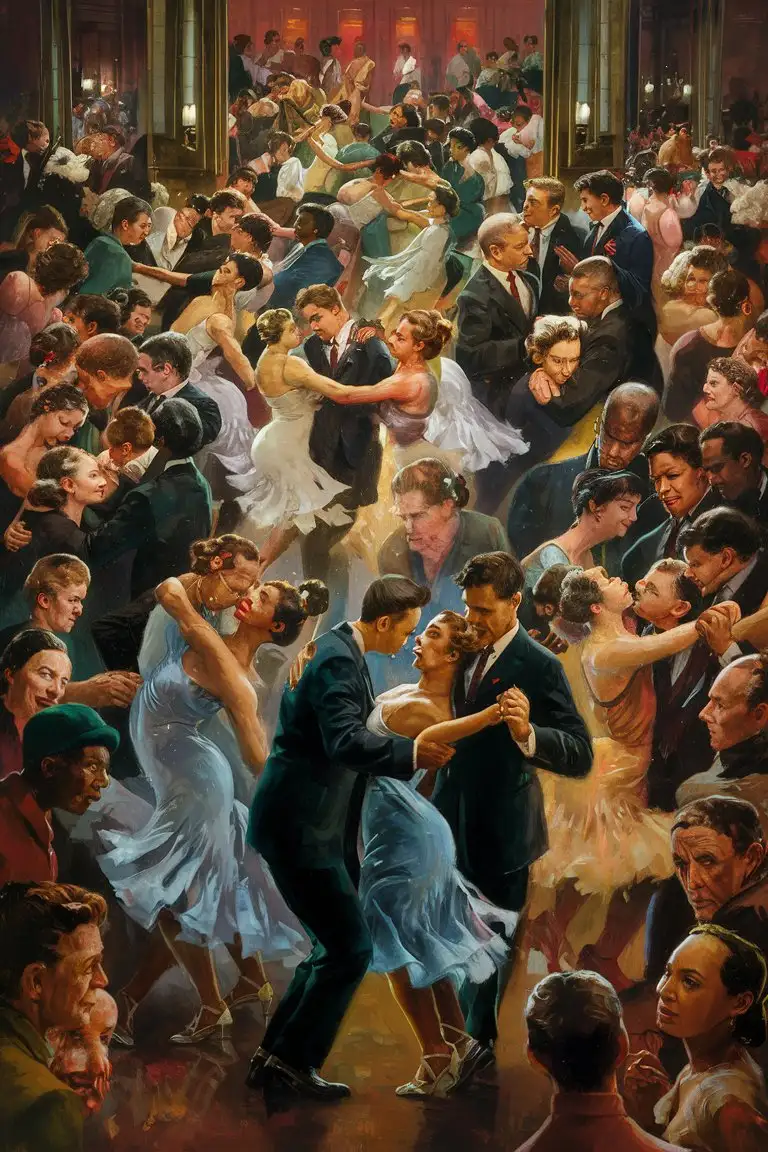
R
Image Prompt
Prompt
Imagine a bustling 1930s New York City dance hall, vibrant and teeming with life, through the eyes of Reginald Marsh, an artist known for his depictions of urban life and its dynamic human tableau. The scene is alive with movement; couples whirl across the dance floor, their forms blending into a symphony of motion. The air is charged with energy, the sounds of jazz and laughter melding into a rich tapestry of urban existence.
The composition captures the hall's grandeur and the patrons' exuberance, dressed in period attire that mirrors the fashion trends of the time. Marsh's characteristic style—detailed figures, expressive faces, and a sense of immediacy—brings the scene to life. The dance hall's architecture, with its ornate decorations and gleaming surfaces, frames the dancers, adding a sense of depth and scale.
In the foreground, a diverse array of dancers captures the viewer's attention, each movement suggesting a story untold. The background offers glimpses of onlookers, their expressions ranging from joy to envy, encapsulating the human drama that Marsh was so adept at portraying. The lighting is strategic, highlighting the dancers' motion and the hall's architectural details, creating a contrast that underscores the vibrancy of the scene.
This image, infused with the spirit of Reginald Marsh's work, invites the viewer to step into a moment of historical and cultural significance, a celebration of life's fleeting pleasures captured in the dance hall's ephemeral beauty.
Model: visiCanvas
Ratio: 2:3
Related AI Images
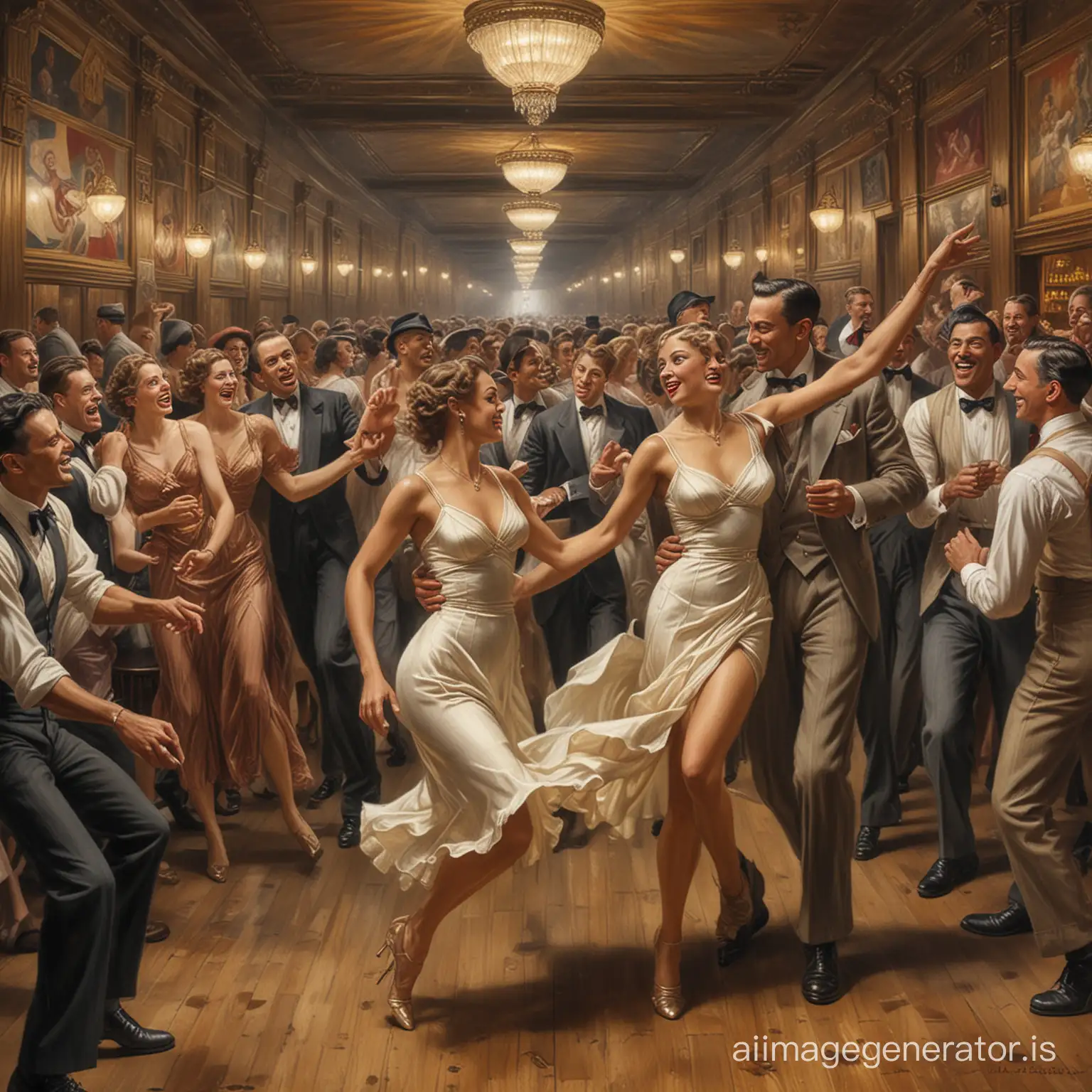
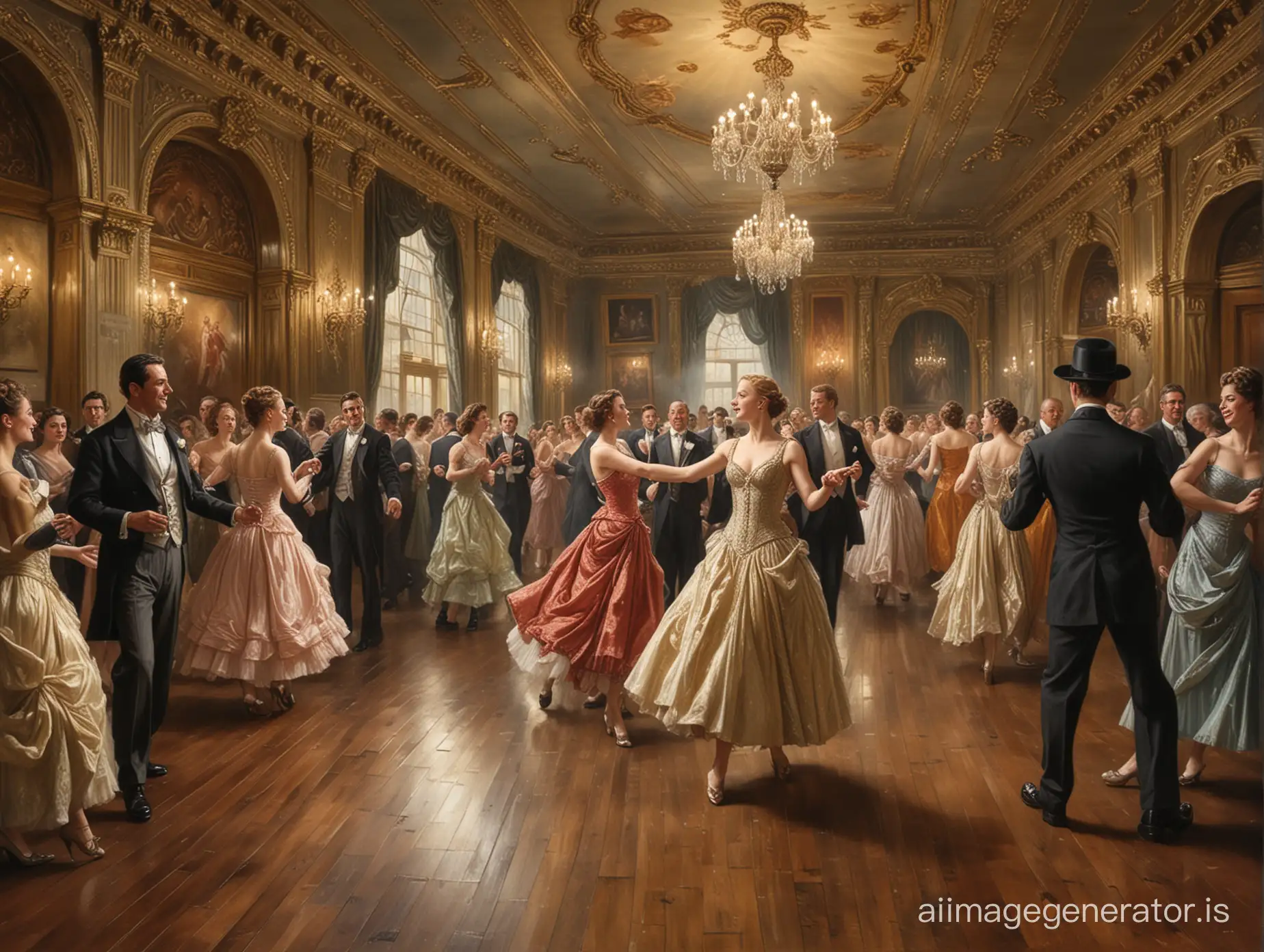
R
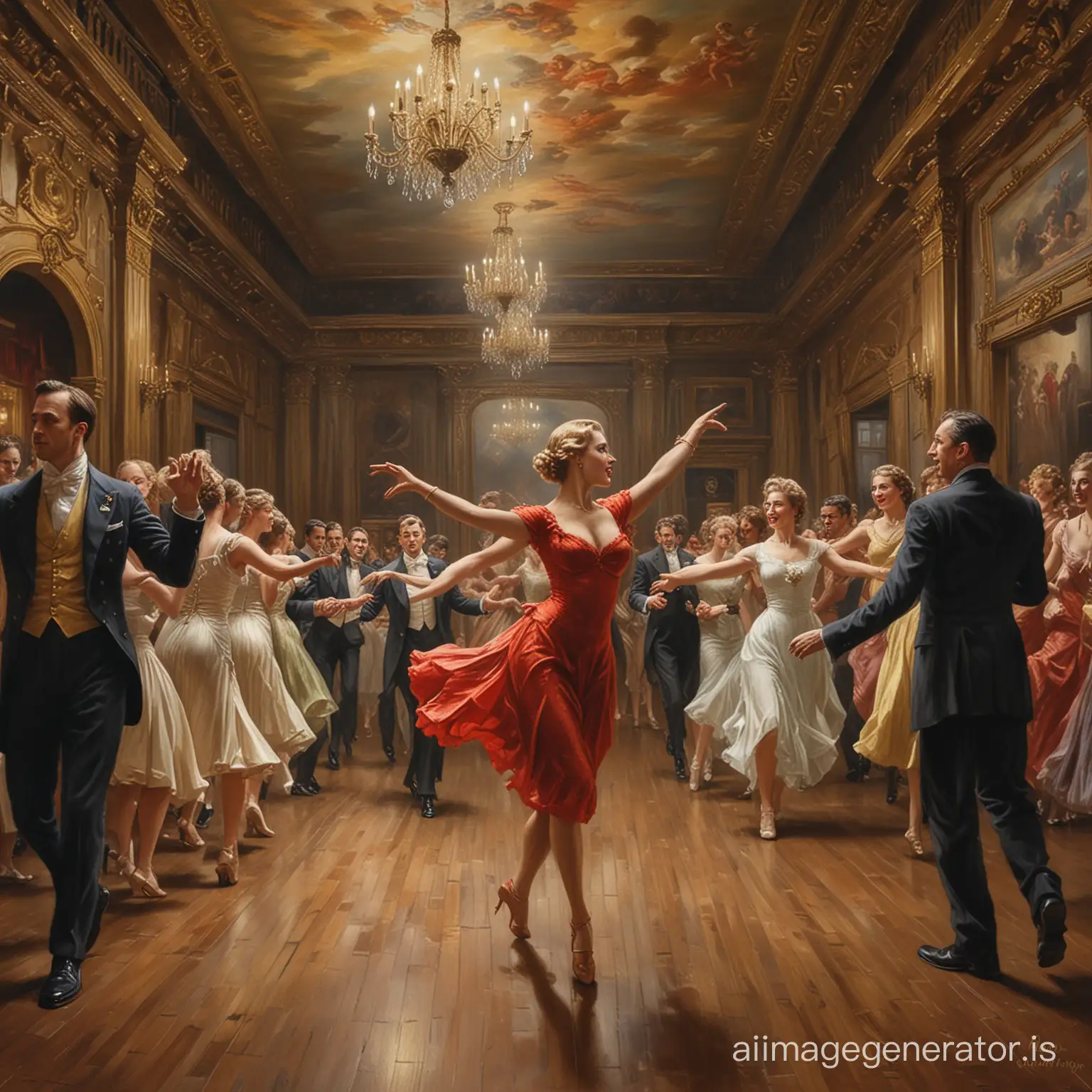
R


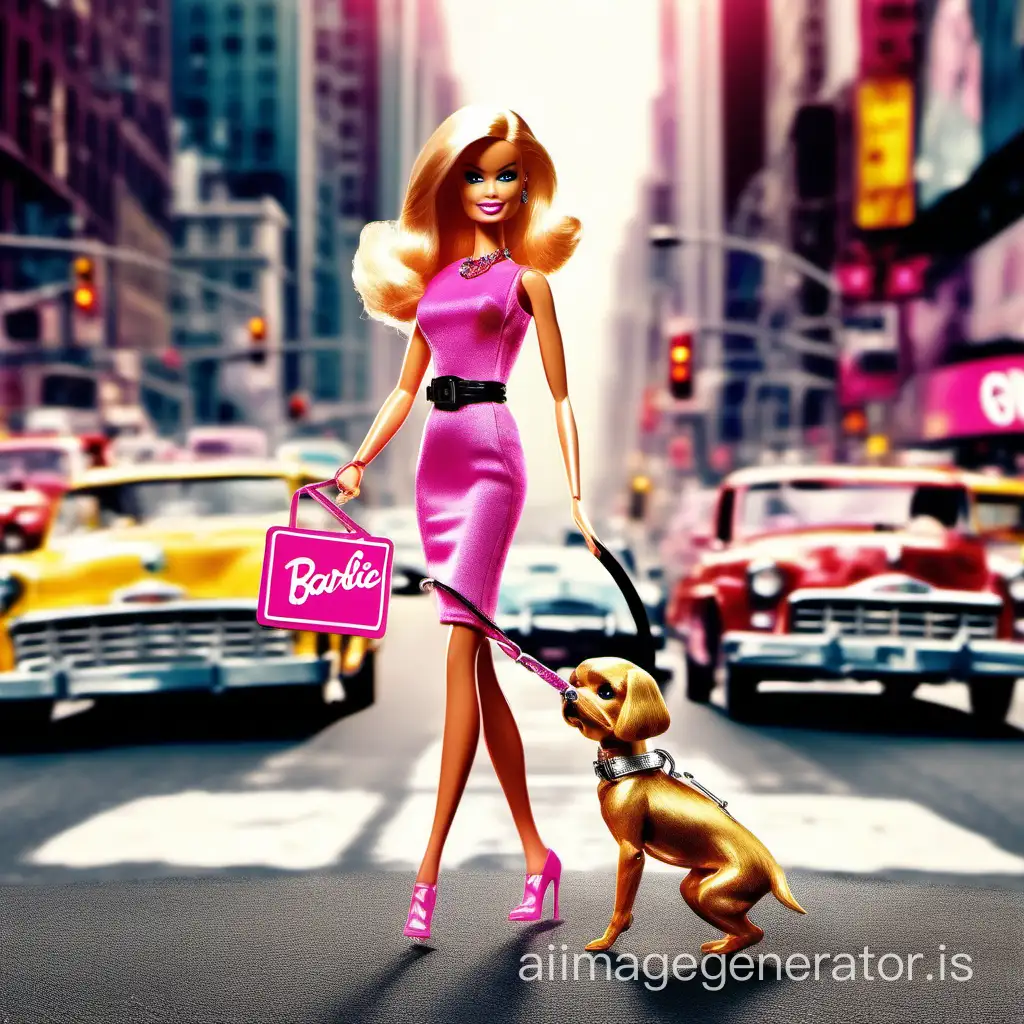

R
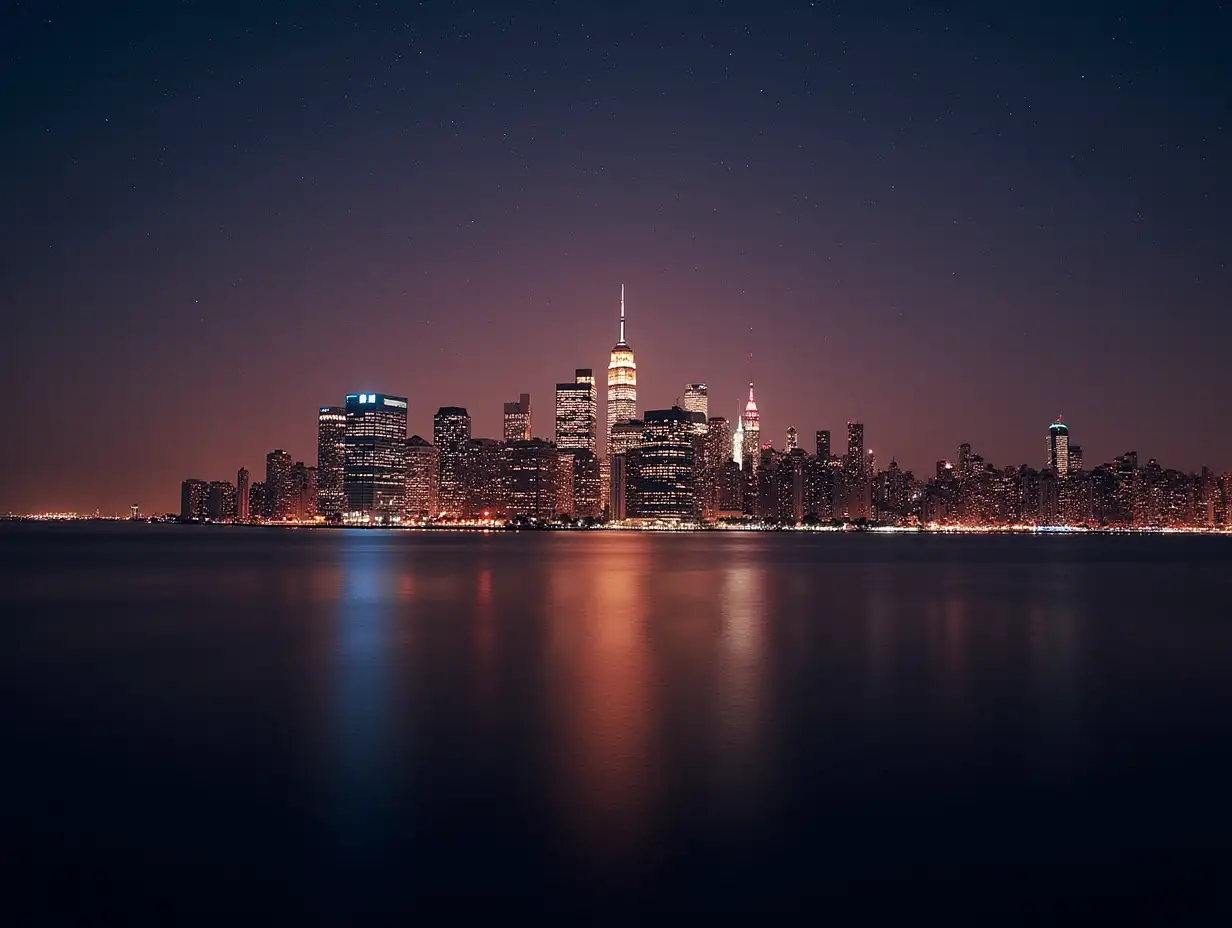
Related Tags
Prompt Analyze
- Subject: The scene is set in a 1930s New York City dance hall, a period of great cultural and artistic significance, where the elegance of the era's fashion and the dynamism of urban life converge. The dancers, dressed in attire reflective of the era's fashion trends, add a layer of authenticity and visual interest to the image. Setting: The dance hall itself is a character in the image, with its ornate decorations, gleaming surfaces, and strategic lighting that adds depth and scale to the composition. The hall's grandeur serves as a backdrop for the human tableau unfolding within it. Style: Reginald Marsh's distinctive style is evident in the detailed figures, expressive faces, and a sense of immediacy that makes the scene跃然纸上. His ability to capture the essence of urban life through his art is central to the image's impact. Coloring: The image is likely to be rich in color, with a palette that reflects the vibrancy of the 1930s. The use of contrasting hues would highlight the dancers' motion and the hall's architectural details, creating a visually striking scene. Action/Items: The image captures a variety of actions—couples whirling across the dance floor, onlookers observing with mixed emotions, and the subtle interplay of light and shadow that adds drama to the scene. Each element contributes to the overall narrative of the image. Costume/Appearance: The patrons of the dance hall are dressed in period-appropriate attire, which not only adds to the historical accuracy of the image but also serves to characterize the individuals within the scene. The clothing, hairstyles, and accessories would be true to the 1930s fashion, enhancing the image's authenticity. Accessories: Small details like accessories worn by the dancers, such as hats, gloves, and jewelry, would add an extra layer of depth and realism to the image. These items, while not the main focus, contribute to the overall atmosphere and period feel of the scene.